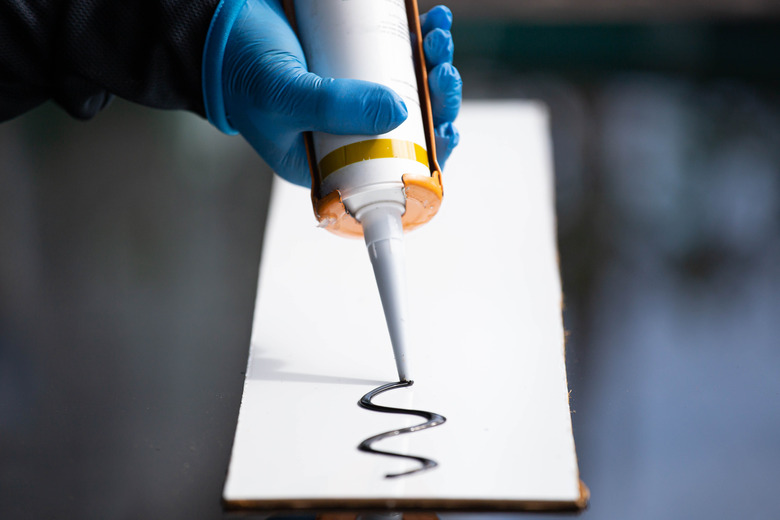How To Glue Wood To Glass
We may receive a commission on purchases made from links.
Gluing different materials together is sometimes a tricky task, as the best glue for one material, such as wood, might not work on the other, such as glass. Much as there's a toothpaste for just about any dental concern, there's an adhesive specially made for just about any gluing-this-to-that scenario. Cyanoacrylates, polyurethane glues, silicone adhesives, and two-part epoxies are all options for gluing wood to glass. No matter which type you use, make sure both surfaces are clean or the glue might not adhere well.
Use Super or Cyanoacrylate Glue
Use Super or Cyanoacrylate Glue
Glues of the "super" variety excel at bonding two unlike materials, including wood and glass. Cyanoacrylate glues, or super glues, function a bit differently than wood glues in that only a drop per inch is enough to bond materials in most cases. Super glues also bond relatively fast compared to typical school glues or wood glues, but they still take about a day to cure. Some super glues come with brush applicators, but most are just in simple squeeze bottles or tubes dispensing a small amount at a time.
Apply a drop per inch on either of the clean wood or glass surfaces and then press and hold the materials together for about 30 seconds or as directed on the glue label. Set the bonded materials aside so the bond hardens for a day or so before using them.
Use Polyurethane Glue
Use Polyurethane Glue
Polyurethane glues, such as the original Gorilla Glue formula, are known for their ability to bond unlike materials, including wood and glass. Though the specifics may vary based on the actual adhesive formula, polyurethane glue works best if both surfaces are clean and if any shiny areas, such as the portion of the glass receiving the glue, are scuffed up a bit and wiped off first.
Wet one of the project surfaces slightly with a damp cloth or a mist from a spray bottle and then apply a thin line of polyurethane glue while wearing gloves and working in a well-ventilated area. Polyurethane glue expands up to triple its size, so use less glue than you would if working with regular white glue.
Press the wood and glass together and clamp or otherwise hold them in place for as long as indicated on the glue label. Remove the clamp and let the glue cure even longer before applying weight to any of the glued areas.
Use Silicone Adhesive
Use Silicone Adhesive
Silicone adhesive sealants both seal gaps and work like glue to bond wood to glass, and some of them are great for outdoor use. This material is gooey and a bit like toothpaste. It squirts out a bit from between the bonded areas if too much is applied.
After cleaning both the wood and glass project areas, apply a thin bead of silicone adhesive to one of the two surfaces. Press the materials together and allow the silicone to cure as recommended on the product label. Since it takes a while to dry and generally remains flexible, it's best for projects such as setting a glass pane in a recessed area for a glass top on a wood table.
Use Two-Part Liquid Epoxy
Use Two-Part Liquid Epoxy
Two-part liquid epoxies create a strong bond between materials, but the key is mixing the resin and hardener in equal proportions to create the desired chemical reaction. Epoxy starts to harden almost immediately, so only mix as much as you think you'll need and be prepared to use it right away.
Warning
Work in a well-ventilated area and wear gloves and eye protection. Many epoxies and two-part resins emit strong fumes.
Pour equal parts resin and hardener into a disposable cup and stir it with a chopstick, toothpick, or even a wooden coffee stir stick. Apply the mixed epoxy to one of the two surfaces using a small, disposable artist's brush or a brush aptly sized for the project. Press the wood and glass together and then clamp them together or set them in such a way that gravity helps hold the bond while the epoxy sets. The epoxy might be hard within a few hours or up to a day depending on the brand, but expect several days for it to fully cure.
